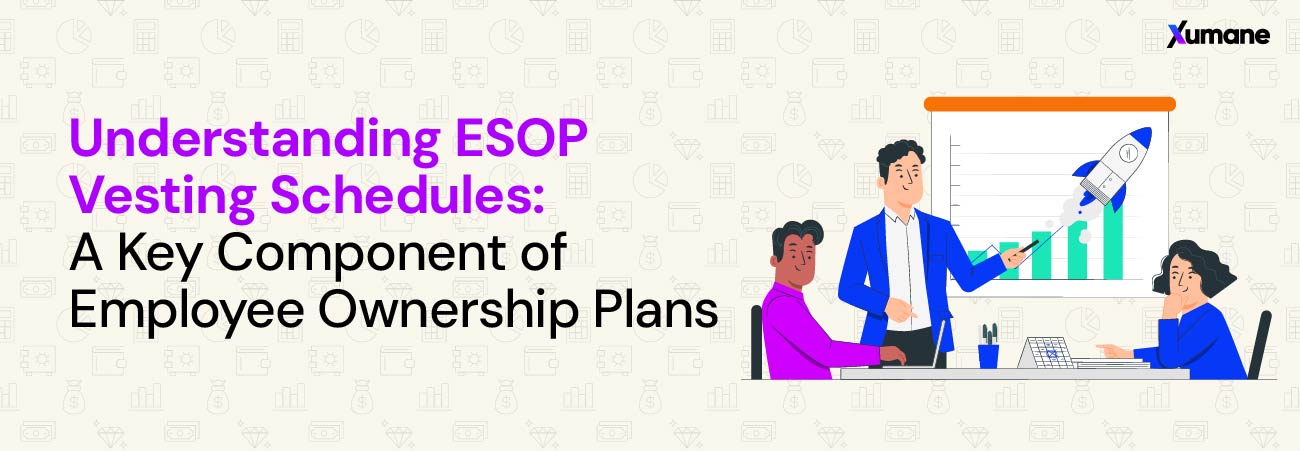
Subscribe to stay ahead with expert insights on ESOPs, smart ownership strategies, and more!
Editor's Note:- ESOP vesting schedules determine when employees can claim ownership of shares allocated to their accounts. The 2 main types are Cliff Vesting (100% vesting after a set period) and graded vesting (gradual vesting over time). Vesting schedules are very important for aligning the interests of an employee and employer, but at the same time, they can impact employees' financial situations.
Understanding the details of ESOP vesting is important for both employers designing plans and employees participating in vested shares.

Employee Stock Ownership Plans (ESOPs) have become a popular way for companies to reward and incentivize their employees, while also providing a mechanism for the transfer of ownership. One important aspect of ESOPs is the vesting schedule, which determines when employees can claim ownership of the shares allocated to their accounts also determined by vesting period in ESOPs.
Vesting schedules are a critical component of ESOPs, as they specifically explain when the employees can claim ownership of the shares or exercise the options allocated to their accounts. These schedules are designed to ensure that employees are incentivized to stay with the company for a specific period, typically several years before they can fully (100%) own the shares. This proves to be the strongest tool for the organisation to retain the employees till the maturity of the ESOPs. At the same time, employees are ensured that the organisation’s and their ESOP value is directly correlated to each other.
For example – if the organisation’s valuation increases from $100Mn to $1,000Mn over a period then definitely the ESOP value of the employee would also grow in the same proportion i.e. 10X This approach helps to align the interests of employees with those of the company, as employees are more likely to be invested in the company's success if they have a stake in its performance.
There are various types of vesting schedules used in ESOPs: cliff vesting, graded vesting and immediate vesting which is linked to a TIME-BASED VESTING.
Vesting schedules play a crucial role in the success of ESOPs. The frequency and the number of options getting vested will be of uttermost priority for an employee as well as for the organisation. By having a mix or variety of vesting schedules employers can plan and achieve various purposes e.g. long-term retainership, hiring top talent from the market, providing loyalty rewards or bonuses in the form of equity to early employees, etc. It will also help to ensure that employees are incentivized to stay with the company, which can lead to increased productivity and job satisfaction.
For employees, vesting schedules can have a significant impact on their financial well-being. When employees are fully vested in their shares, they can claim ownership and potentially benefit from the company's financial performance. However, employees also need to plan their timing of exercise to plan and manage the taxation liabilities and expected liquidity from the ESOPs. Employees need to understand carefully various aspects of the vesting schedule, its terms and conditions, lock-in period (if any), etc.
Employers face substantial implications from vesting schedules. When crafting their ESOP program, companies need to meticulously assess the vesting timeline, as it can influence both the financial outcomes of the company and the overall morale of their workforce. Effective communication with employees regarding their vesting status is crucial for employers, although this process can be labor-intensive and demand substantial resources.
In conclusion, ESOP’s vesting schedules are a critical component of employee ownership plans. They help to ensure that employees are incentivized to stay with the company, aligning their interests with those of the company. Understanding the different types of vesting schedules, including cliff vesting, graded vesting, and immediate vesting is essential for both employers and employees. By carefully designing and communicating vesting schedules, companies can promote a sense of ownership and responsibility among employees, leading to increased productivity and job satisfaction.